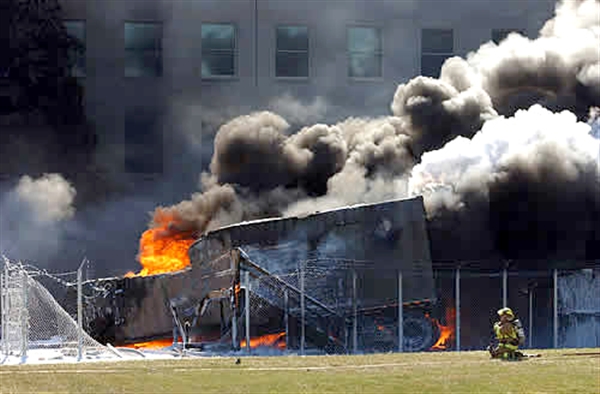The U.S. Air Force’s B‑1 bomber celebrated its silver anniversary in June. But as in many marriages, the path to reaching the 25-year milestone wasn’t always predictable.
 |
| The B‑1 has now delivered more than 70 percent of a key satellite-guided munition used by U.S. forces in Afghanistan during Operation Enduring Freedom. U.S. Air Force Photo Click to enlarge |
“The Boeing-built B‑1 was conceived during the Cold War to drop nuclear bombs,” said Howard Chambers, a former Boeing B‑1 program manager. “The first aircraft was delivered in 1985, but when the Cold War ended six years later, the United States agreed to remove the B‑1’s nuclear capability as part of an arms reduction treaty with Russia. It was suddenly an aircraft without a primary mission.”
But the B‑1 still had plenty of life, not to mention un-refueled intercontinental range and plenty of room for weapons. So Boeing and the Air Force reinvented it. They transformed the sleek bomber into what would become a workhorse protecting U.S. and allied ground troops.
Today, the B‑1 enjoys a second honeymoon of sorts.
“The B‑1 is an outstanding conventional bomber, and now with all the upgrades, such as targeting pods and radars, it has allowed us to play a big part in the fight overseas in Afghanistan and in Iraq,” said Lt. Col. Mike Miller, commander of the 9th Bomb Squadron at Dyess Air Force Base, Texas. “It allows us to stay airborne for many hours. We carry a lot of gas, and we carry a lot of weapons. So right now, our primary job overseas is we go perform close-air support for the troops on the ground, who love this aircraft.”
Modifying the B‑1 for a non-nuclear role was no small task. When it was built, it was not equipped to communicate with ground troops, and its ability to carry conventional bombs was limited.
“As part of the conversion to a conventional bomber, we had to install tactical radios for the bomber crew to communicate with the troops on the ground,” said Rich Parke, Boeing’s B‑1 business development manager. “We were moving from fixed targets, like munitions dumps or power plants that would have been surveyed ahead of time, to targets that were dynamic and had just recently been located by reconnaissance platforms or ground troops.”
The next step was converting the weapon bays to hold more conventional weapons, including satellite-guided weapons such as Joint Direct Attack Munitions (JDAMs). Boeing-built JDAMs are low-cost guidance kits that convert existing 500‑, 1,000- and 2,000-pound, unguided, free-fall bombs into accurately guided “smart” weapons. The B‑1 dropped its first JDAM in Afghanistan less than one month after the Sept. 11 terrorist attacks in the United States. The B‑1 has now delivered more than 70 percent of the JDAMs dropped by U.S. forces in Afghanistan during Operation Enduring Freedom.
Another feature that now distinguishes the B‑1 is its ability to carry multiple types of weapons.
“With the Block E modification came new computers that gave the B‑1 the flexibility to mix and carry different weapons,” said Boeing’s Mark Metevia, the former technical lead responsible for putting conventional weapons on the B‑1. “New software was written so an individual launcher could carry and release a blend of different bombs. The B‑1 was no longer limited to carrying one type of bomb.”
A once-nuclear bomber was transformed into a multi-role, long-range, flexible strike bomber capable of providing armed reconnaissance, close-air support, armed escort and show of force to protect coalition ground forces.
The B‑1’s conversion to a conventional bomber was underscored by implementation of a treaty provision allowing Russia to inspect B‑1s at random.
“I was visiting Ellsworth Air Force Base in South Dakota a couple of years ago when the Air Force officials we were meeting with had to be excused to escort a Russian delegation to inspect the B‑1s,” Parke said. “The Russians were validating that the aircraft were modified in accordance with the treaty.”
B‑1 operators say the current fleet of 66 aircraft maintains its relevance in an ever-changing environment thanks to an Air Force-Boeing partnership to improve what is affectionately called the “Bone,” derived from the phonetically spelled name B‑one.
“This is such a great aircraft,” Miller said. “The crew members love it, the maintainers love it and the nation loves it because the job it does overseas is just tremendous.”
Source:
Boeing Company

 von
von 